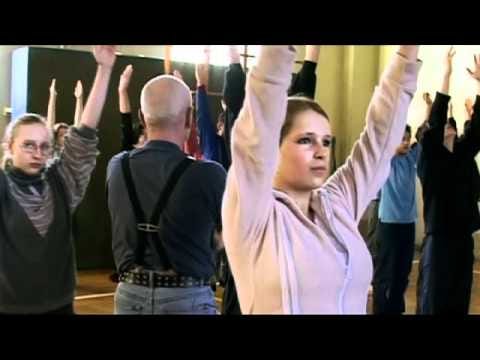"Prejudices are just skin-deep" – Connecting Through Dance with Royston Maldoom
Have you ever heard about community dance projects? Let me tell you: we need more of these to overcome barriers and re-establish our human connection through the power of touch.
In our Western society, touch is often viewed as invasive, and it requires a great deal of trust to let someone into your personal space and touch your body. Although boundaries are essential in many cases, by consistently safeguarding our personal space, I believe we risk losing the profound connections that compassion, empathy, and deep understanding create. Because the body knows. And this is where the author of this wonderful quote in the headline of this article comes into play: Royston Maldoom.
Royston Maldoom: A Pioneer in Community Dance
Perhaps you've never heard of him, and if you have, you're likely connected to the dance world. Royston Maldoom is one of the pioneers in Community Dance – a method where professional dancers initially engage with diverse communities to create dance performances, some of which are absolutely breathtaking.
My first encounter with community dance happened through an award-winning documentary called 'Rhythm is It.' It showcased several schools here in Berlin, with students from less privileged backgrounds, coming together to dance to Stravinsky's 'Le Sacre du Printemps,' accompanied by the Berlin Philharmonic under Sir Simon Rattle. While the performance itself was astonishing, what truly struck me was the remarkable process that Royston and his team guided them through.
Most of them had never danced before, but they were all curious about the unknown. We get to know Marie, a teenager, who was struggling with her exams, or Olayinka, a refugee and orphan from Nigeria living all alone at this young age. And then there is Martin, a very sensitive young man, dealing with life and what to do with it.
And they all grew so, so much during this artistic process. I don’t like the word transformative, but I can’t find another word to describe their incredible journey. Here is the trailer, the whole documentary can be watched on Amazon or here.
Years later, I had the privilege of participating in a workshop led by Royston. Our group consisted of individuals from various backgrounds, including kindergarten teachers, actors, and well, dance enthusiasts like myself.
Royston guided us through exercises that not only broke physical barriers but also built trust among strangers. Within hours, we were holding and lifting each other and at the end of the day, we were dancing a choreography to this wonderful song “Swords of Damocles” by Rufus Wainwright.
The weekend was just a small preview of the bridges that the artistic process and community dance in particular can build between people. And believe me, Royston built plenty of bridges throughout his career.
Breaking Labels through Dance
I recently discovered a podcast where Royston discusses these projects and the power of community dance. He worked with various groups, from recovering addicts to war victims, and even street kids in Ethiopia, some of whom later became professional dancers. What struck me most was when he talked about a project in a women's prison.
Within the prison, they had a kind of marketplace where several organizations offered services like "help for single mothers in prison" or "what to do after prison” etc. Royston and his team simply posted an advertisement saying, "Dancers wanted for a production”. And of course, the women came. It sounded interesting, they said.
But they also came because it was a label-free offer. It didn’t matter they were prisoners or what they’ve done to end up there – it just mattered that they wanted to dance. So by creating a space where art can happen, we get in touch with each other, and in the case of community dance, our bodies literally get in touch.
And this is where we overcome boundaries, labels, stereotypes – a process we are in desperate need of these days. This podcast interview is absolutely fascinating. I mean, it’s unbelievable what they achieved and who they brought together.
I listened to it on YouTube because he has shared many beautiful pictures from his work there. But you can also find it on Spotify, of course.
Let’s stay in touch. Literally.
Cheers,
Katie




